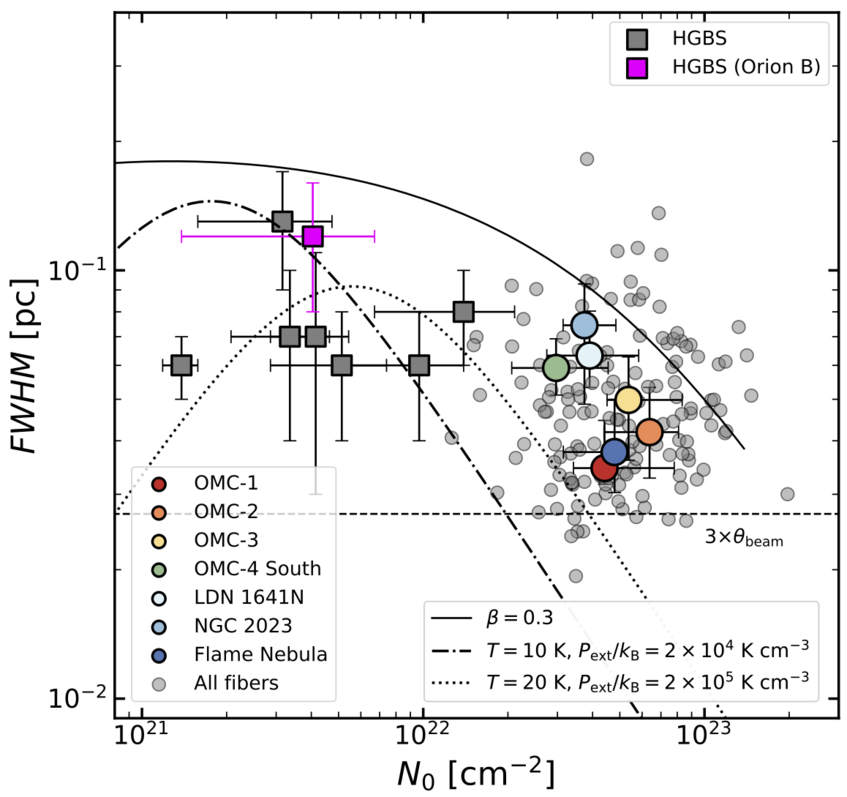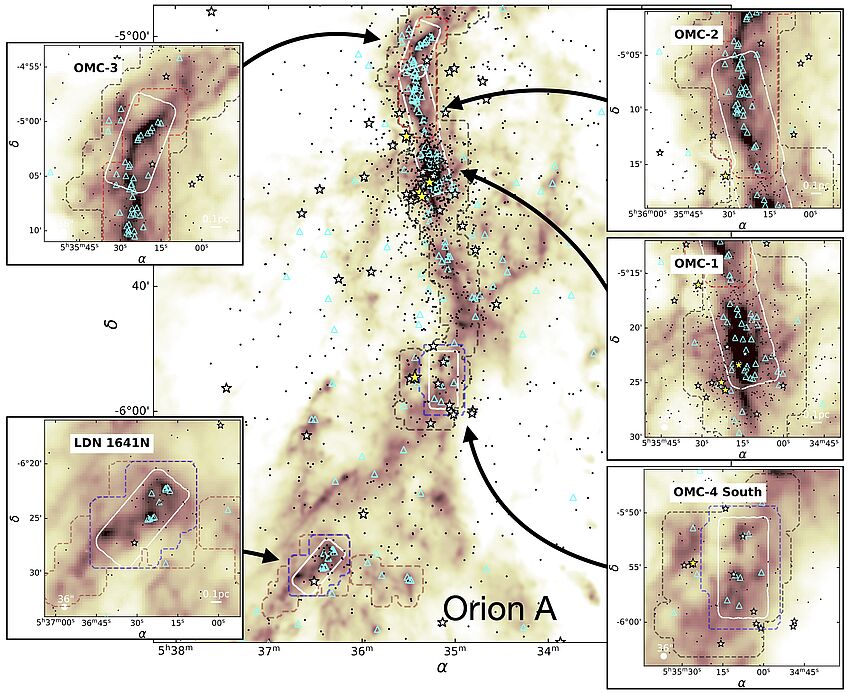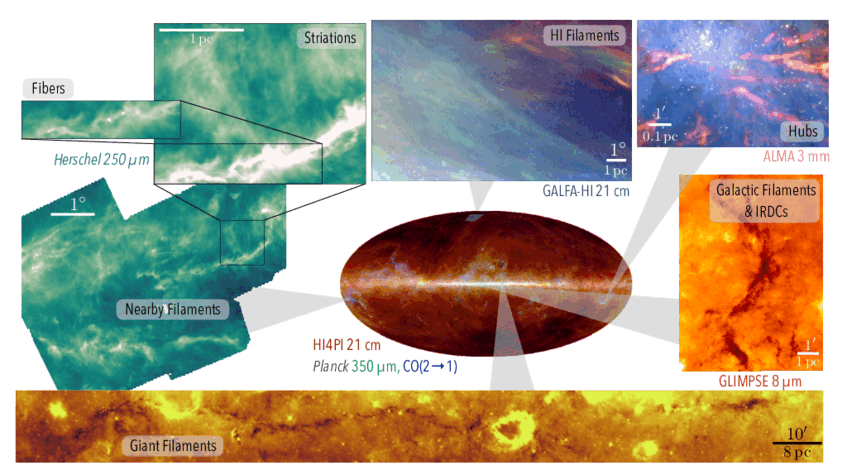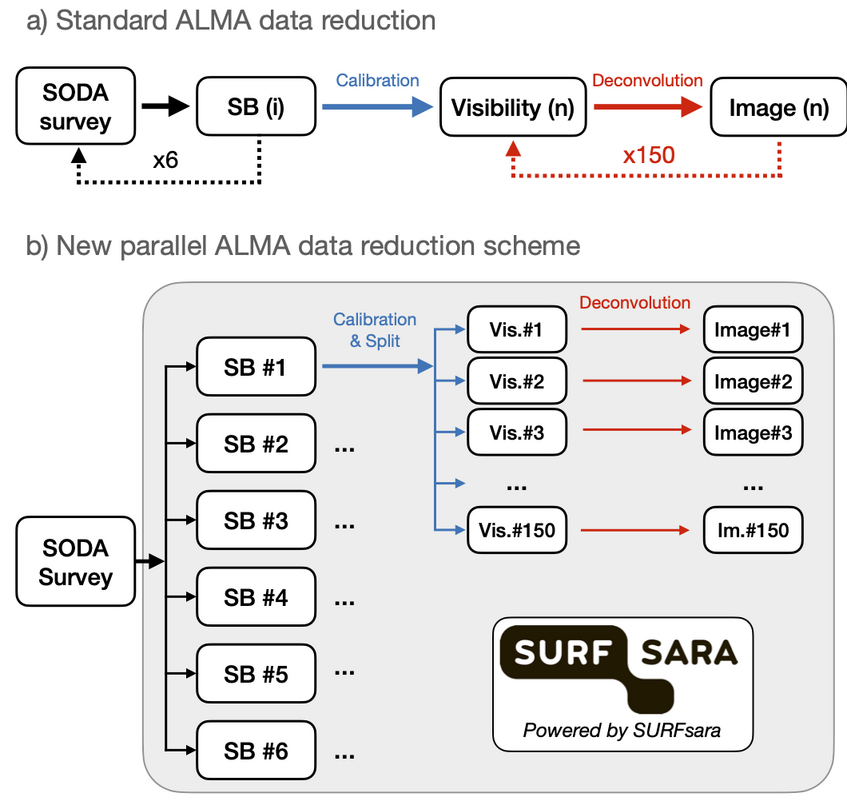Scientific Results
Environmental dependence of the fiber widths
Whether filaments show a "constant 0.1 pc width" has been a matter of long debates in the star formation community. Our results (Socci et al 2024b, Paper IV) demonstrate that fibers show systematic variations of their width (FWHM) depending on the region. Our results suggest that filaments adapt their widths to their environment, most likely to the external pressure of the clouds in which they are embedded.

Dependence of the fiber width (FWHM) as function of their central column density (N0). See Socci et al 2024b.
EMERGE Early ALMA survey
EMERGE will investigate the structure and evolution of dozens of fiber complexes across the Galaxy. As pilot work, we explored the EMERGE Early ALMA survey covering 7 star-forming regions in Orion homogeneously observed using high-sensitivity ALMA+IRAM-30m observations. Our data illustrate the need of advanced data combination to investigate the complex filamentary nature of the ISM across scales.

EMERGE observations (footrints) in the Orion A cloud. See Hacar et al 2024 for a description of the data.
PP7 chapter: Initial conditions for Star Formation: A physical description of the filamentary ISM
The Protostars and Planets Conference takes place every five to ten years. Its aim is to summarize the state-of-the-art and progress achieved in the research fields of star and planet formation. The next Protostars and Planets VII (PP7) will take place in Kyoto in 2023. Our team has participated in the new PP7 chapter (Hacar, Clark, Heitsch, Kainulainen, Panopoulou, Seifried, & Smith 2022) investigating the "Initial Conditions for Star Formation: A Physical description of the filamentary ISM". Condensing the progress made in this field within the last decade, we have explore the physical conditions of different filamentary structures in the ISM at all scales. Using a large meta-data study this paper reveals new properties and scaling relations of the ISM filaments. Also, it discussed some of the main challenges and potential avenues for the future.

Examples of some of the different filament families identified in the literature.
Observing 873 proto-planetary disks with SODA: massive ALMA data processing using Supercomputers
As part of the Survey of Orion Disks with ALMA (SODA) project (van Terwisga, Hacar, van Dishoeck, Oonk, and Portegies Zwart, 2022), we investigate a total of 872 proto-planetary disks with ALMA in the Orion A cloud. As part of its contribution, EMERGE is developing a new scheme for the reduction of massive ALMA datasets using supercomputers such as SURFsara. Contrary to previous linear methods, EMERGE creates a parallel data processing using the full capabilities of SURFsara, reducing the total reduction time by 2 orders of magnitude. Visit the SODA section to obtain all data products (FITS and PNG images) of this project.

SODA workflow. (a) Standard data reduction. (b) Parallel ALMA data reduction scheme implemented on the SPIDER platform that is part of SURFsara’s Data Processing facilities.
